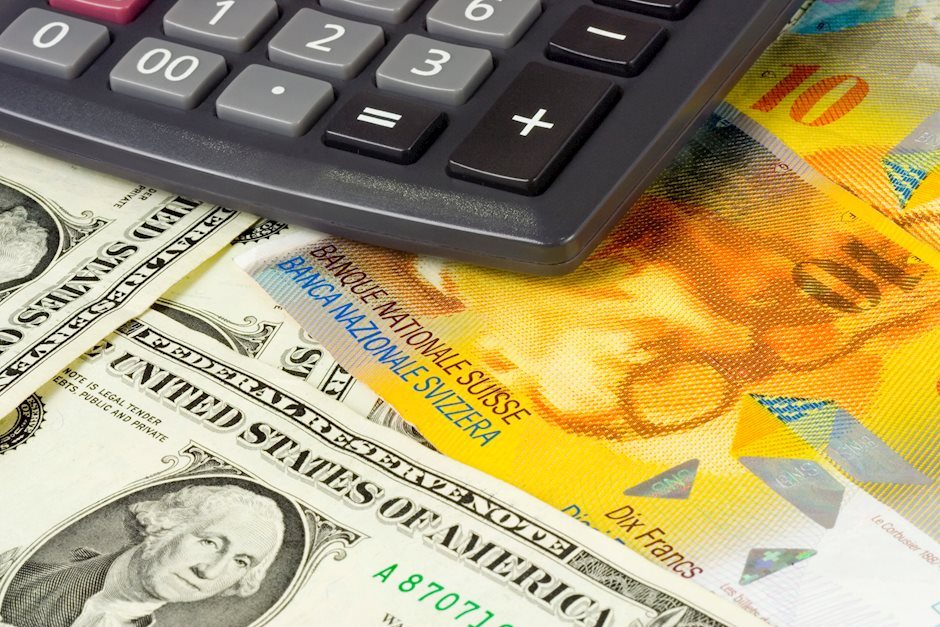USD/CHF extends losing streak as Fed rate cut prospects improve
- USD/CHF falls below 0.9000 amid a weak US Dollar.
- The Fed is expected to start lowering interest rates in September.
- Easing Swiss inflation has boosted prospects of more rate cuts by the SNB.

The USD/CHF pair extends its losing streak for the fourth trading day on Monday. The Swiss Franc asset stays below the psychological figure of 0.9000 as the US Dollar’s (USD) outlook appears to be vulnerable due to growing speculation that the Federal Reserve (Fed) will pivot to policy normalization from the September meeting.
The US Dollar Index (DXY), which tracks the Greenback’s value against six major currencies, finds a temporary support near three-week low around 104.85. 10-year US Treasury yields edge higher to 4.3% but trades close to weekly low.
Improves expectations for the Fed reducing interest rates earlier than previously anticipated is unfavorable for the US Dollar and bond yields. In the latest dot plot, Fed officials signalled only one rate cut this year and policymakers have forecasted that in the last quarter.
The possibility of the Fed lowering interest rates from September has strengthened due to moderating United States (US) labor market strength as indicated by the Nonfarm Payrolls (NFP) report for June. The report showed that the Unemployment Rate rose to 4.1% and annual Average Hourly Earnings, a measure of wage inflation, decelerated expectedly to 3.9%. While payrolls data beat estimates but remained below May’s reading.
This week, investors will keenly focus on the US inflation data for June, which will be published on Thursday.
On the Swiss Franc front, easing inflationary pressures could force the Swiss National bank (SNB) to continue reducing interest rates further. Annual Swiss Consumer Price Index (CPI) decelerated to 1.3% in June, while economists expected price pressures to have grown steadily by 1.4%.
Swiss Franc FAQs
The Swiss Franc (CHF) is Switzerland’s official currency. It is among the top ten most traded currencies globally, reaching volumes that well exceed the size of the Swiss economy. Its value is determined by the broad market sentiment, the country’s economic health or action taken by the Swiss National Bank (SNB), among other factors. Between 2011 and 2015, the Swiss Franc was pegged to the Euro (EUR). The peg was abruptly removed, resulting in a more than 20% increase in the Franc’s value, causing a turmoil in markets. Even though the peg isn’t in force anymore, CHF fortunes tend to be highly correlated with the Euro ones due to the high dependency of the Swiss economy on the neighboring Eurozone.
The Swiss Franc (CHF) is considered a safe-haven asset, or a currency that investors tend to buy in times of market stress. This is due to the perceived status of Switzerland in the world: a stable economy, a strong export sector, big central bank reserves or a longstanding political stance towards neutrality in global conflicts make the country’s currency a good choice for investors fleeing from risks. Turbulent times are likely to strengthen CHF value against other currencies that are seen as more risky to invest in.
The Swiss National Bank (SNB) meets four times a year – once every quarter, less than other major central banks – to decide on monetary policy. The bank aims for an annual inflation rate of less than 2%. When inflation is above target or forecasted to be above target in the foreseeable future, the bank will attempt to tame price growth by raising its policy rate. Higher interest rates are generally positive for the Swiss Franc (CHF) as they lead to higher yields, making the country a more attractive place for investors. On the contrary, lower interest rates tend to weaken CHF.
Macroeconomic data releases in Switzerland are key to assessing the state of the economy and can impact the Swiss Franc’s (CHF) valuation. The Swiss economy is broadly stable, but any sudden change in economic growth, inflation, current account or the central bank’s currency reserves have the potential to trigger moves in CHF. Generally, high economic growth, low unemployment and high confidence are good for CHF. Conversely, if economic data points to weakening momentum, CHF is likely to depreciate.
As a small and open economy, Switzerland is heavily dependent on the health of the neighboring Eurozone economies. The broader European Union is Switzerland’s main economic partner and a key political ally, so macroeconomic and monetary policy stability in the Eurozone is essential for Switzerland and, thus, for the Swiss Franc (CHF). With such dependency, some models suggest that the correlation between the fortunes of the Euro (EUR) and the CHF is more than 90%, or close to perfect.
Author

Sagar Dua
FXStreet
Sagar Dua is associated with the financial markets from his college days. Along with pursuing post-graduation in Commerce in 2014, he started his markets training with chart analysis.

















